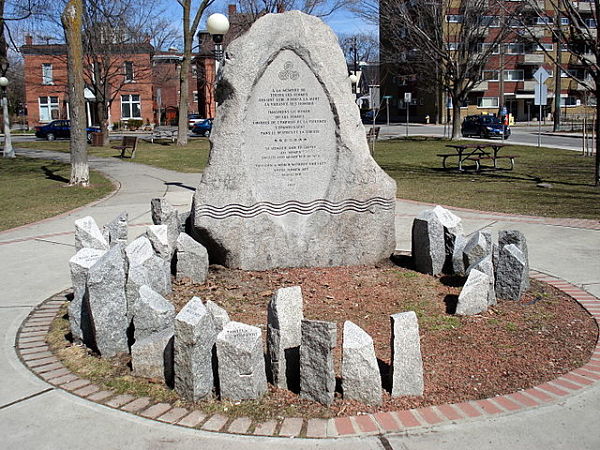 International Debate
International Debate Remembering the Montreal Massacre, Patricia Allen and the Many Victims of Male Violence

The Ottawa Women’s Monument in that city’s downtown Minto Park was dedicated in 1992 to the women murdered as a result of domestic violence. (Photo: Padraic Ryan/Wikimedia/CC)

Michelle L. Stack
In some ways things have changed from 1991. There is more training for health, justice, and educational professionals about gender-based violence, and these are very good things. But when I look at the university where I work and other universities across North America, at frosh week rape and Pocahontas chants at UBC’s business school, misogyny on a Facebook page of male dentistry students at Dalhousie University, the callous attitude shown by my male colleague in 1991 lives on.
The evidence is overwhelming: Gender-based violence at universities is not an outlier. Academic studies also point to robust educational practices, policies and processes to prevent and respond appropriately when violence does happen. Yet, the experiences of my generation and the ones before me continue. I was recently speaking with a Ph.D. student who told me things I remember telling a professor 25 years ago. She noticed students are disciplined if they commit acts of vandalism — but a student or faculty member known for gender-based violence can get away with it. For women with disabilities, Indigenous women, women of color, and LGBTQ+ people the chance of experiencing violence are even higher.
Blaming acts of violence against women on a few bad apples – aberrant or troubled men – is a dangerous form of collective amnesia. Occasionally horrific acts of violence become media stories and are seen as shocking and rare, but these acts are divorced from the everyday context of ubiquitous male violence.
This December 6th I once again remembered the women killed, for the audacity of getting an education, the audacity of having a profession, the audacity to leave a partner, the audacity to live as women. I also once again commit this year to confront the ubiquity of interconnected structural violence in its many forms.
And to learn, find hope and ideas for collective action I’ve bookmarked the following blogs:
http://www.feministcurrent.com/
http://www.informedopinions.org/
Other suggestions would be much appreciated.































































































